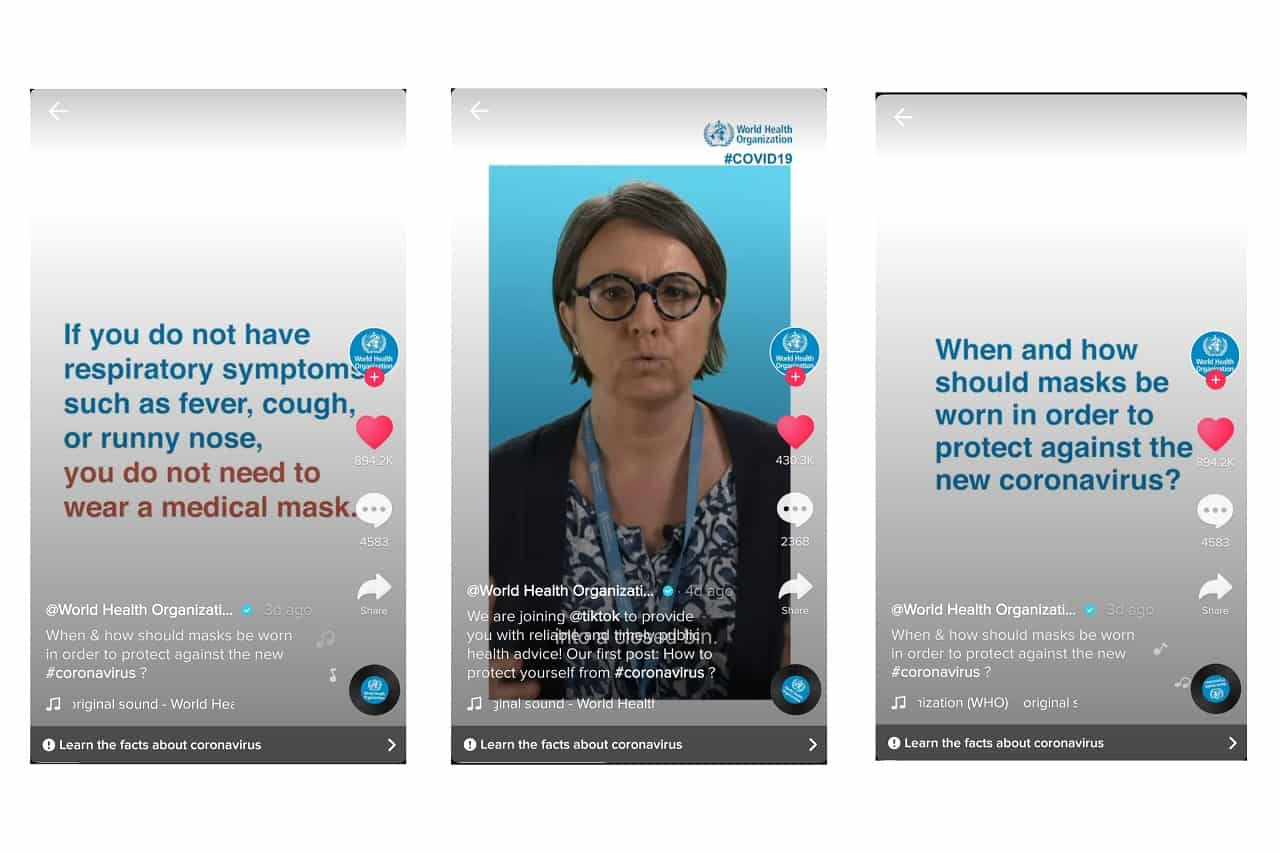
The World Health Organization joined TikTok on Friday (28/02), and is using the social video platform to share information about the coronavirus. It has so far posted two videos related to coronavirus. One offering COVID-19 prevention tips and another clarifying the use of face masks. This was done to spread accurate information about COVID-19, as fears of a possible global pandemic rise.
“Particularly with this COVID-19 outbreak there has a massive ‘infodemic’. An over-abundance of information – some accurate and some not – that makes it hard for people to find trustworthy sources and reliable guidance when they need it,” said Tarik Jasarevic, a WHO spokesperson, told Insider.
As the MIT Technology Review reported in February, WHO has partnered with social-media platforms like Facebook, Twitter, Instagram, and TikTok in order to distribute accurate information amid misinformation and memes.
For example, Insider previously reported the existence of a viral video posted to TikTok and Instagram that showed two teens in hazmat suits spill a drink on a New York City subway, pretending the liquid contained the virus. Others have pretended to have COVID-19 in an effort to gain attention.
In the first of two videos posted to the WHO TikTok page, Benedetta Allegranzi, the technical lead of infection prevention and control, explained different ways to prevent the spread of coronavirus. Her recommendations echoed previous advice issued by other health organizations, like the US Centers for Disease Control.
Allegranzi recommended people frequently clean hands using an alcohol-based product or soap and water, use an elbow or tissue to cover their mouths when coughing or sneezing, avoid individuals with symptoms of the virus, and share travel information with medical professionals if a person is exhibiting symptoms of COVID-19.
Face masks have become a point of contention as demand for them in the US increases as fears of the virus spreading domestically, though officials, like Vice President Mike Pence, have argued they are not effective in preventing the spread of the virus and are not necessary.
The US surgeon general on Saturday went as far as to say people should not buy face masks, as they could create a shortage for people and healthcare professionals who need them. Still, Pence said at a press conference Saturday that the US was working with 3M and other manufacturers to produce 35 million new masks each month.
In its second video posted Saturday, WHO detailed when and why people should wear face masks. "If you do not have respiratory symptoms, such as fever, cough, or runny nose, you do not need to wear a medical mask. Masks should only be used by health workers, caretakers, and by people with those symptoms," text in the video said.
Toward the end of the video, April Baller, who works with the WHO Health Emergency Program, provided instructions on how to put on a face mask. She advised people to wash their hands before applying a mask, inspect the mask for tears or holes, and demonstrated how to correctly orient and apply a mask. She added masks should only be used one time before being immediately discarded.
WHO's TikTok account has developed a large following in a short time. In just a few days, it has earned more than 121,400 followers. The first video posted earned over 430,000 likes and the second video nearly 900,000 likes.
Days after the WHO's TikTok account appeared, the director-general of the WHO on Sunday advised that there is reason to prepare for a "pandemic," but also encouraged people to apply a facts-over-fear mentality amid global market panic.
TikTok is widely believed to be one of the most popular social-media platforms for Generation Z, meaning TikTok could be an effective way for health organizations like WHO to get information out to younger people who often get news directly from social media.
"The infodemic on COVID-19 is affecting a lot of people out there with various different age groups. We need to be able to make our information available out there to cover these various groups. We saw TikTok is an opportunity to reach a younger audience, yes, but we also use other social media platforms which might reach different age groups as well," Jasarevic said.

